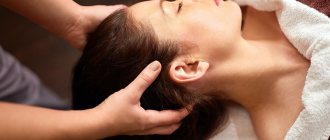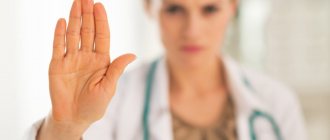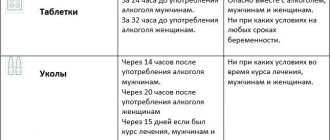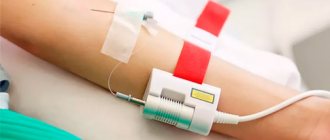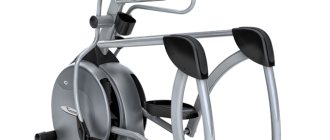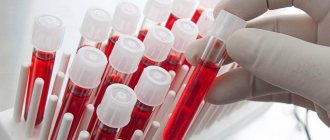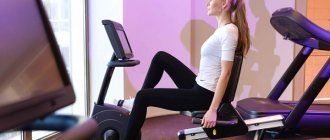What is blood pressure
Blood pressure (BP) is one of the health constants by which one can judge the state of the body.
This concept is associated with the constant work of the heart muscle, which, like a pump, pumps blood into large vessels. As blood flows through arteries, it puts pressure on their walls. Blood pressure indicators depend on the elasticity of the walls of blood vessels and the volume of blood entering them at the time of contraction of the heart muscle.
Normal blood pressure in an adult is 120/80 mm. Hg Art. The first number is the pressure at the moment of maximum contraction of the heart muscle, it is called systolic or upper. The second characterizes blood pressure at maximum relaxation of the heart - this is the lower or diastolic pressure.
Normal pressure indicates a sufficient level of oxygen in the blood and high elasticity of the walls of blood vessels.
Blood pressure indicators are affected not only by the work of the heart and the condition of blood vessels; they can change under the influence of a number of factors, for example, emotional state, weather, physical activity.
Blood pressure needs to be constantly monitored. And immediately contacting a doctor in the event of a persistent decrease or increase will allow you to identify health problems at an early stage and avoid the risks of developing serious pathologies.
Causes of low blood pressure
A decrease in blood pressure by no more than 20 mm Hg. Art. - this is a relative norm; usually these fluctuations are temporary and do not affect general well-being. Pathology is indicated when for a long time the readings do not exceed 100/60 mmHg. Art. This condition is called arterial hypotension and is divided into several types:
- Physiological. Low pressure at rest is often observed among professional athletes, people working in hazardous industries, and living in high mountain areas with a rarefied atmosphere. It is also observed in those living in conditions of very low or high temperatures, for example, in the Far North or in regions with a tropical climate. This type of hypotension is called adaptive or compensatory.
- Pathological, that is, arising against the background of systemic diseases or decreased physical activity. This condition leads to poor circulation. Disruption of the mechanisms of blood pressure regulation and the development of hypotension can occur due to hormonal imbalance, for example, with hypothyroidism or adrenal dysfunction. Hereditary predisposition also plays a major role. Another reason for a sudden decrease in blood pressure may be an acute allergic reaction - anaphylactic shock.
- Neurogenic - diagnosed mainly in adolescence, often as a result of brain injuries or autonomic disorders. This type of hypotension occurs due to dysfunction of the nervous system or problems with cerebral circulation.
- Medication. The reason for a sharp decrease in blood pressure is often due to uncontrolled use of drugs to lower blood pressure or diuretics.
Low blood pressure can be a symptom of various diseases, in this case they speak of secondary arterial hypotension. A decrease in pressure is typical for osteochondrosis, inflammatory infectious diseases, heart failure, stomach ulcers and a number of others.
A sharp decrease in pressure can occur against the background of anaphylactic shock, severe bleeding, intoxication of the body, and prolonged dehydration. The tonometer will show low blood pressure values in case of chronic fatigue, constant lack of sleep, depression.
Hypotension can also be a consequence of poor nutrition, when a person, in order to quickly lose weight, switches to a diet with a significant calorie deficit. In women, blood pressure often drops when there is heavy bleeding during menstruation.
Important! The choice of drugs to increase and decrease blood pressure cannot be made independently or on the advice of friends. This can aggravate the situation and lead to irreversible consequences.
Only a doctor can understand the reasons for the decrease in pressure and prescribe the correct treatment after conducting a comprehensive examination.
Execution method
The specialist pays special attention to those parts of the body that are directly related to the passage of nerve pathways. The impact is on the vasomotor centers, which include the head, neck and collar area. In most cases, it tries to alternate areas.
Before starting the procedure, the specialist measures the pressure indicators, and if their value is acceptable, a session is scheduled.
If the blood pressure is too high or the blood pressure is too low, the session is postponed. Consistently large deviations from the norm are the reason for refusal of physical procedures and require therapeutic intervention.
Effective methods involve exposure to each of them for 1 minute. For high blood pressure, the duration of the physiotherapy procedure should not be more than 15 minutes. The massage is carried out in courses, the number of sessions is determined by the attending physician. On average, patients are prescribed 15 procedures. It is important to use the services of a qualified specialist and not skip appointments. Even if there is a lasting result, you cannot immediately abandon drug treatment.
For the collar area
The patient being massaged is located on a chair, his head is placed on clasped hands located on the table. This pose allows you to relax the muscles of your back and neck as much as possible. Movements are performed only in the up and down direction.
The technique involves:
- stroking;
- rubbing;
- spiral movements;
- imitation of chopping and sawing movements.
When performing massage movements, the impact force is on average 3 times less compared to other areas. Finish the massage with light strokes.
For the back
Massage relieves spasms in the back muscles and normalizes well-being. All movements are performed only in the direction from the back of the head to the corner of each of the shoulder blades.
The sequence of influence is as follows:
- rubbing is carried out in a straight line, then spiral movements are imitated;
- the area is warmed up with fingertips;
- the spinous processes are affected;
- the first step is repeated.
The session ends with light stroking movements.
For the neck
Kneading the neck relieves spasms and improves blood circulation, which leads to normalization of blood pressure. The specialist strokes the area of the appendix and lymph nodes, sequentially moving to the pectoral muscle, sternum and ribs.
The chin and collarbone are subjected to massage movements. When working we use:
- traditional stroking;
- pinching movements;
- rubbing;
- creating vibration.
The massage is completed with stroking movements.
For the head
The massage is performed on the patient, who during the procedure lies on his stomach, and his head is in his hands during the session. Movements begin from the crown, moving towards the back of the head, forehead and temples.
The following movements are used in the process:
- light stroking with open fingers;
- imitation of zigzags and circles with your fingertips;
- light rubbing.
After performing a massage in these areas, the patient turns over and the forehead area is affected, starting from the midline towards the temples. Finish the session with circular rubbing movements in the temple area.
Symptoms of Low Blood Pressure
Low blood pressure can lead to dizziness.
Photo: cookie_studio / freepik.com Manifestations of hypotension depend on the causes of its occurrence and the form of the disease. If the pressure drops due to an existing disease, then the main symptoms will be precisely the signs of the underlying pathology. These will be supplemented by a constant feeling of fatigue, general weakness, irritability, rapid pulse, headache, and increased sweating.
Physiological hypotension is most often a common condition for a person, and he may not experience any discomfort.
With a sharp decrease in blood pressure, a person may lose consciousness or complain of:
- dizziness;
- vision problems;
- lack of confidence when walking;
- difficulty breathing.
In this condition, there is significant paleness of the skin, unsteadiness of gait, some confusion, and inhibited speech are possible.
An acute condition requires immediate medical attention.
Important! If you notice a change in a person's facial expressions, loss of orientation, severe shortness of breath or excessive agitation with signs of hallucinations, call an ambulance immediately. These symptoms are characteristic of pre-stroke and pre-infarction conditions - in them every minute is precious.
The effect of a massage procedure on normalizing blood pressure
With hypertension, high blood pressure levels are observed, the values of which can exceed 140/110. With hypotension, the situation is the opposite, the pressure is below normal at the border of 100/60 or less, which is also the cause of poor health.
With high blood pressure, a person experiences a sharp deterioration in health. He may suffer from headaches, chest discomfort, tinnitus, and spots in the eyes. When arterial hypertension appears and very high levels, the consequences can be sad, which can result in a stroke, heart attack or even death of a person. A characteristic symptom of low blood pressure is apathy, weakness, and fatigue.
Carrying out a massage helps improve blood circulation and vascular tone, and relieves spasms in problem areas.
As a result, the patient’s condition and blood pressure indicators are normalized. At the same time, it is important that the massage is carried out by a competent specialist who has an understanding of the anatomical features and techniques of massage in different situations, otherwise the patient’s condition may worsen. For high blood pressure, the session involves only a targeted impact in compliance with the rules of working with the patient.
How to increase blood pressure quickly and effectively
Source: Raeann Buskey/Pixy.org
Only a doctor can prescribe medications for high blood pressure. But it is possible to help a person in an acute situation and alleviate his condition during a sudden attack of hypotension without medications.
Coffee
Drinking a cup of strong, freshly ground coffee is the best solution. Caffeine has a pronounced vasoconstrictor effect, so it reduces blood pressure well and has a tonic effect.
Massage
Impact on some biologically active points irritates the nerve endings and activates the blood circulation process. Massage has a beneficial effect on all body systems, accelerating metabolism and toning blood vessels.
Important! Massage is a procedure for actively influencing the body and should be trusted to professionals with medical education. Incorrect massage technique can cause significant harm to health.
Massage can improve mood, relieve spasms, relieve headaches and joint pain, and normalize sleep.
Increasing blood pressure with nutrition
If low blood pressure is not associated with internal diseases, then it can be easily normalized by including some foods in the diet:
- green tea - it tones well and improves blood circulation;
- kefir, fermented baked milk, yogurt, cottage cheese and other fermented milk products;
- celery root, which can be added to salads or other dishes;
- strawberries, fresh vegetables and fruits - carrots, tomatoes, pumpkin, apples;
- beet juice.
The diet for hypotension is aimed at increasing the overall tone of the body, replenishing the deficiency of vitamins and minerals, accelerating metabolic processes and normalizing the water-salt balance.
Pharmacy tinctures
Herbal tinctures are widely used to increase blood pressure and generally strengthen the body. To be safe and avoid the risk of incorrect dosage, it is better to buy tinctures at a pharmacy and strictly follow the directions on the package. And in the future, it is better to consult a doctor and choose the formulations that he recommends.
Ginseng tincture
Ginseng root has been used medicinally for over two thousand years. One of the main properties of this plant is its ability to regulate blood pressure. Depending on the dosage, ginseng root tincture is used to both increase and decrease blood pressure.
A decrease in blood pressure when taking the tincture occurs due to:
- increasing the overall tone of the body;
- strengthening the walls of blood vessels;
- improved appetite;
- normalization of emotional state;
- acceleration of metabolic processes.
Before taking ginseng tincture, you should consult your doctor and make sure there are no contraindications.
Eleutherococcus tincture
It is a proven remedy for nervous disorders, problems with the immune system and low blood pressure.
It is believed that the product improves performance and speeds up metabolism. It is prescribed for general exhaustion of the body, physical overload, anemia, and atherosclerosis. The biologically active substances contained in the tincture increase vascular tone and normalize blood pressure.
The dosage and duration of treatment is determined by the doctor based on the severity of symptoms and the absence of contraindications.
Schisandra tincture
Chinese lemongrass is a type of climbing vine. Its fruits, which contain essential oils, organic acids and microelements beneficial to the body, are used in medicine.
Schisandra tincture increases vascular tone and has a general tonic effect. The product can be used to quickly raise blood pressure and normalize well-being.
Important! All herbal products can only be used as adjuvant therapies. They should be taken only after consultation with your doctor at the recommended dosage.
Self-massage for hypotension
At home, if there are no serious health risks, you can perform self-massage. This method is effective when it is necessary to increase blood pressure without resorting to outside help. The massage technique involves carrying out a general direction of influence.
Particular attention is paid to the lower extremities, abdominal area and lumbosacral area.
In order to increase the pressure, use the following movements:
- intermittent stroking;
- rubbing at a vigorous pace;
- active kneading;
- intermittent vibration.
Low pressure massage should be intense and force you to increase tone. It is recommended to do a daily morning massage of the feet, neck and shoulders, which will “start” the blood supply processes and the functioning of vital systems. Physiotherapy to harden the body will help increase the efficiency and effectiveness of the procedure, which will increase blood circulation and help increase vascular tone.
How to increase blood pressure urgently
Source: CC0 Public Domain
If the pressure has dropped sharply, and there are no medications at hand, it can be quickly increased using the following methods:
- eat something salty, for example, a pickled cucumber, a tomato or a slice of well-salted lard;
- drink a lot of plain clean water;
- Brew strong coffee and drink in small sips.
In case of repeated attacks, you should consult a general practitioner or cardiologist and undergo a comprehensive examination.
Therapeutic exercises to improve bowel function
The proposed set of exercises helps with both atonic and spastic constipation. To achieve a positive effect, gymnastics should be performed regularly, gradually increasing the load: during the first month of classes, perform the exercises 3-5 times, then from 5 to 10 times. It is better to do gymnastics at the same time, on an empty stomach - for example, in the morning.
If the exercises cause discomfort (severe pain in the intestines, bloating, rapid heartbeat, nausea), then the course should be temporarily stopped and consult a doctor.
Perform the exercises slowly, combined with proper breathing, without sudden jerks. Watch your body position! Adults must show children the correct execution and control the process of gymnastics.
Contraindications for performing gymnastics are fever, ulcerative colitis, intestinal pain, diarrhea, and concomitant diseases in the acute stage.
Increased blood pressure without medication
A contrast shower will help raise your blood pressure.
Photo: andranik.h90 / freepik.com Some people do not trust traditional medicine and prefer to be treated with folk remedies. If you feel unwell due to a sudden drop in blood pressure, for example, due to a sudden change in weather or a long flight, you can try to raise it without medication:
- take a contrast shower;
- eat a few slices of dark chocolate;
- drink a couple of cups of strong natural coffee - yes, coffee can really help quickly.
However, if hypotension is associated with existing diseases, it is better to avoid such express methods so as not to harm the body.
Medicines for high blood pressure
Medicines to increase blood pressure are prescribed in emergency cases or for prolonged hypotension. The choice of drug is based on the nature of the disease and examination results.
The main groups of drugs for lowering blood pressure:
- Caffeine-based drugs are used to urgently increase blood pressure in critical situations. They are administered intramuscularly or intravenously by emergency or hospital doctors. Caffeine is contraindicated in cases of cardiac arrhythmias and heart failure.
- Analeptics that affect the respiratory and vasomotor centers of the brain.
- Glucocorticoids - increase blood pressure by constricting blood vessels; they are used quite rarely due to the large number of side effects.
- Adrenergic agonists that affect the muscles of the heart, blood vessels and some other drugs.
Any drugs to increase blood pressure are used only as prescribed by a doctor and strictly in the dosage prescribed by him.
Contraindications
Before conducting a massage course, consultation with the attending physician and permission to conduct it are required. The possibility of massage for hypertension is often determined by the form of the disease. The primary stage is typical for 95% of cases, and often the pathology is caused by stress and addictions. It is with this form of the disease that massage will be effective.
In the secondary form, physiotherapy is ineffective or can provoke an even greater increase in blood pressure.
Contraindications for appointments:
- hypertensive crisis;
- last stage of hypertension;
- tendency to bleeding, problems with blood clotting;
- tuberculosis;
- tumor formations;
- heart pathologies requiring surgical intervention.
A contraindication to massage procedures may be an upset digestive system. Physiotherapy is not performed if there are injuries or problems with pathological or purulent skin diseases. The ban is imposed by mental disorders, depression or fever.
Tips and tricks
Arterial hypotension is a dangerous condition that can be a harbinger of serious problems with cerebral circulation and the first sign of an impending stroke or heart attack. There are different ways to increase blood pressure, but all of them must be approved by your doctor.
Any problems with the heart and blood vessels must be addressed comprehensively, and self-medication is unacceptable here. You should also not rely too much on traditional medicine - medicinal herbs can be part of a therapeutic complex only as auxiliaries.
To normalize blood pressure, you should avoid stressful situations, get enough sleep, give up bad habits and pay attention to a proper diet.
How to improve blood pressure permanently
Regular physical activity is needed to maintain normal blood pressure.
Photo: tertyshnyk_oksana / freepik.com To consolidate success, you can make changes to your lifestyle and increase your blood pressure for a long time. For example, you can:
- Switch to a diet with a high salt content - but only a little, it is important not to go beyond the adequate recommendations;
- Reduce consumption of alcoholic beverages;
- In hot weather, drink more fluids;
- Ask the doctor to evaluate the medications the person is prescribed to take. Perhaps some of them have hypotension as a side effect;
- Play sports - at least 150 minutes of physical activity per week;
- Reduce the time you spend standing still.
If necessary, your doctor may recommend elastic compression stockings that cover the calf and thigh. They will help limit blood flow to your legs—and keep more blood in your upper body.
Sources
- A.V. Barsukov, A.M. Karimova, Yu.Sh. Khalimov, D.V. Glukhovskaya The problem of arterial hypotension in young patients in clinical practice // Bulletin of the Russian Military Medical Academy. – 2021. – No. 3 (55)
- ROBERT STIGLER. Normaler und hoher Blutdruck und kardiavaskuläre Mortalität bei verschiedenen Völkern [Electronic resource] // Springer-Verlag Berlin Heidelberg GmbH, 1964.
- Michel Burnier, Edward Pivin, Fatma Megdiche. Neue Ziele für die Behandlung von Bluthochdruck? [Electronic resource] // Swiss Medical Forum ‒ Schweizerisches Medizin-Forum, March 2021.
- PROF. LUCA RIDOLFI, DOTT.ING. ANDREA GUALA. Fluidodinamica del sistema arterioso durante l'infanzia e l'adolescenza [Electronic resource] // Emodinamica del sistema arterioso, 2021.
- Keith Sturgess. Management and treatment of hypotension and hypertension [Electronic resource] // Vet Times, 2021.
